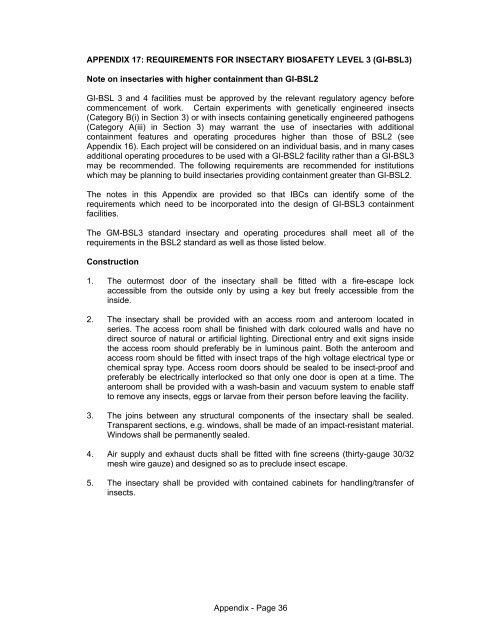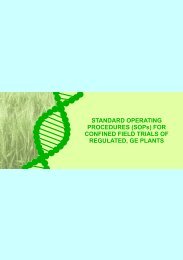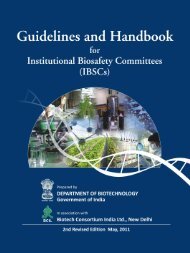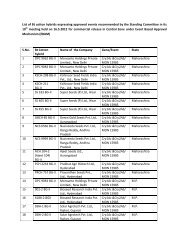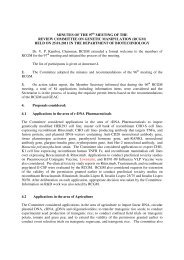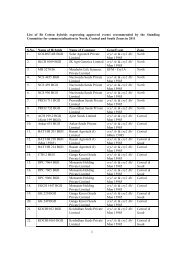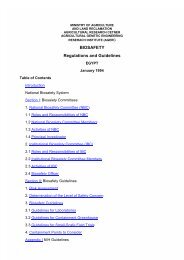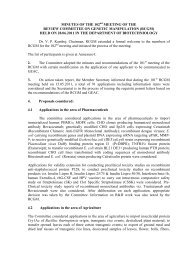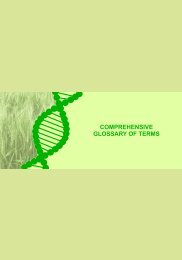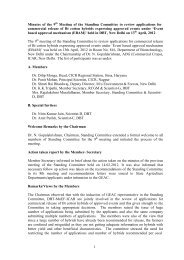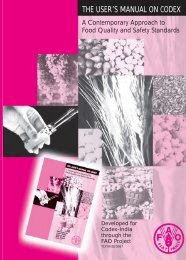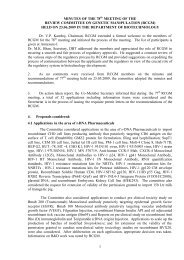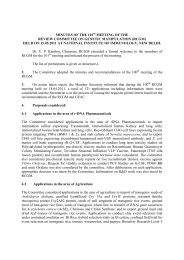Biosafety Guidelines For Research On Genetically Modified ...
Biosafety Guidelines For Research On Genetically Modified ...
Biosafety Guidelines For Research On Genetically Modified ...
You also want an ePaper? Increase the reach of your titles
YUMPU automatically turns print PDFs into web optimized ePapers that Google loves.
APPENDIX 17: REQUIREMENTS FOR INSECTARY BIOSAFETY LEVEL 3 (GI-BSL3)<br />
Note on insectaries with higher containment than GI-BSL2<br />
GI-BSL 3 and 4 facilities must be approved by the relevant regulatory agency before<br />
commencement of work. Certain experiments with genetically engineered insects<br />
(Category B(i) in Section 3) or with insects containing genetically engineered pathogens<br />
(Category A(iii) in Section 3) may warrant the use of insectaries with additional<br />
containment features and operating procedures higher than those of BSL2 (see<br />
Appendix 16). Each project will be considered on an individual basis, and in many cases<br />
additional operating procedures to be used with a GI-BSL2 facility rather than a GI-BSL3<br />
may be recommended. The following requirements are recommended for institutions<br />
which may be planning to build insectaries providing containment greater than GI-BSL2.<br />
The notes in this Appendix are provided so that IBCs can identify some of the<br />
requirements which need to be incorporated into the design of GI-BSL3 containment<br />
facilities.<br />
The GM-BSL3 standard insectary and operating procedures shall meet all of the<br />
requirements in the BSL2 standard as well as those listed below.<br />
Construction<br />
1. The outermost door of the insectary shall be fitted with a fire-escape lock<br />
accessible from the outside only by using a key but freely accessible from the<br />
inside.<br />
2. The insectary shall be provided with an access room and anteroom located in<br />
series. The access room shall be finished with dark coloured walls and have no<br />
direct source of natural or artificial lighting. Directional entry and exit signs inside<br />
the access room should preferably be in luminous paint. Both the anteroom and<br />
access room should be fitted with insect traps of the high voltage electrical type or<br />
chemical spray type. Access room doors should be sealed to be insect-proof and<br />
preferably be electrically interlocked so that only one door is open at a time. The<br />
anteroom shall be provided with a wash-basin and vacuum system to enable staff<br />
to remove any insects, eggs or larvae from their person before leaving the facility.<br />
3. The joins between any structural components of the insectary shall be sealed.<br />
Transparent sections, e.g. windows, shall be made of an impact-resistant material.<br />
Windows shall be permanently sealed.<br />
4. Air supply and exhaust ducts shall be fitted with fine screens (thirty-gauge 30/32<br />
mesh wire gauze) and designed so as to preclude insect escape.<br />
5. The insectary shall be provided with contained cabinets for handling/transfer of<br />
insects.<br />
Appendix - Page 36


